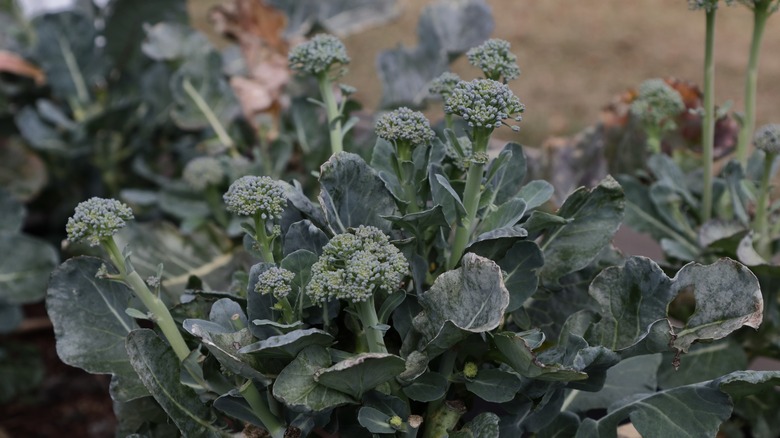Broccoli is one of the yummiest vegetables among the plants you should start sowing in late winter to set your garden up for success. When it comes time to pick the forest-green, brain-like heads that result from this on-schedule planting, savvy gardeners can turn to TikTok for tips on how to get more broccoli for their busy work. One piece of trending advice is getting even the greenest of thumbs excited — @marfskitchengarden suggests leaving your broccoli plants in the ground after harvesting the main head instead of pulling them up. Why? Because, in a roundabout way, your broccoli will grow back after cutting!
While you won’t get another colossal head, you’ll get something arguably more helpful: an ever-growing collection of individual florets, ringed, in some cases, by even teenier heads where the stem meets a branch or leaf. Broccoli plants produce side shoots as part of their reproductive strategy. Broccoli heads are essentially a cluster of flowers; once pollinated, these flowers produce seeds. Growing side sprouts increases the chances a single plant will birth successive generations of offspring; as a bonus, we gardeners get a prolonged harvesting period. If you’re lucky, you may even be blessed with a third crop of florets, provided the weather doesn’t get too hot (over 80 degrees Fahrenheit).
How to harvest
@marfskitchengarden
The secret to loads of broccoli! #gardeningforbeginners #broccoli #growfood #gardenhack
♬ A Gentle Sunlight – James Quinn
To take advantage of additional crops, harvest the main head before it turns yellow. The color change from green to sepia indicates the plant has begun to flower; it will go on to set seed instead of producing extra heads. Depending on the variety, the ideal harvest time sits somewhere between 50 and 90 days post-planting. Always harvest in the cool early morning hours to prevent your cut produce from wilting and to preserve flavor.
Grab a pair of gardening gloves and something to drop your head and florets into after harvest. You’ll need a knife or pair of harvesting shears — the sharper, the better, so you don’t damage the stem and introduce disease. The Opinel No. 10 Pocket Knife is just $21.50 from Johnny’s Selected Seeds. Quality harvest shears from Oesco will set you back $19.87.
Holding the head of the side shoot in one hand, use your other hand to cut it off, along with about 4 inches of stem. Repeat the process until you harvest all the side shoots on the plant. You can also harvest (and eat) the leaves, but this will limit the number of side shoots your plant produces. If you prefer larger (though, notably, fewer) secondary sprouts, keep the stem of the main head long when you harvest it. A shorter central head stalk encourages your plant to produce more but smaller side shoots. Check your plant every day for around two weeks and harvest any additional sprouts you spot.
Buy branching varieties

Most broccoli varieties produce some side shoots, but some, known as “branching” cultivars, do a better job than others. Green Magic, Gypsy, Packman, Brigadier, Di Cicco, Emperor, Green Comet, Mariner, and Premium Crop have been developed for long-season, mild temperature side-shoot production, as have Italian Sprouting (calabrese) varieties. (The latter won’t form a sizeable main head at all.) Harris Seeds has packets of 1,000 Green Magic F1 seeds — treated or untreated — for $15.30. You can get 500 Gypsy broccoli seeds for $6.95 from Territorial Seed Company, while Nature & Nurture Seeds sells certified organic De Cicco in 120-seed packets for $5.49. If you prefer seedlings or transplants, ask for any of the above-listed varieties at your trusted local nursery or big-box retailer when the season starts, typically in mid-late winter.
Broccoli and other head-forming vegetables like cauliflower and cabbage are in the brassica family. You might suppose this trick works with broccoli’s growth habit-sharing cousins. Though cauliflower and cabbage do indeed produce large heads like their grass-green kin, they won’t produce additional sprouts once the main head is harvested. Instead, the standard advice is to pull these plants from the garden and discard them or, better yet, compost them directly after harvest.



